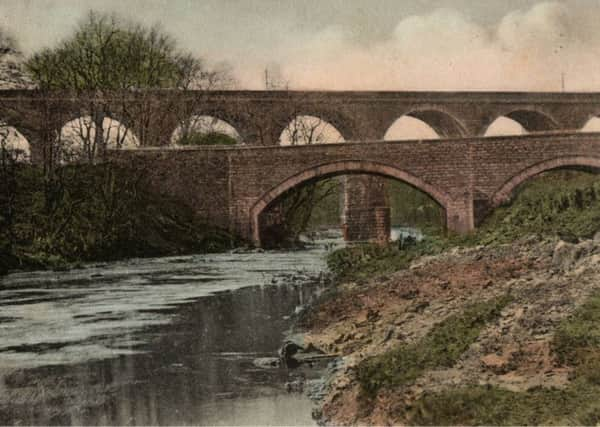Dunipace to Carron: history all along the riverbanks


Last week I stopped in Denny and Dunipace and one of CATCA’s successes there in 2012 was the replacement of the Dale bridge.
Dating back to 1891, the old bridge was the third to cross the river at this point allowing workers to reach the Denovan printworks which employed 600 people and produced beautiful calico printed cottons.
Advertisement
Hide AdAdvertisement
Hide AdThe bridge is now part of the walking network, an important part of today’s healthy lifestyle. From the old Denovan Kirk, the Carron sweeps down towards Larbert Old Parish Church.
The impressive building sits high above the river, commanding the vital crossing where the Roman road from the fort at Carmuirs passed over en route to Torwood and the north.
Not far away is Castlehill where the Scottish Army with the young King Charles II in tow set up their guns to face Cromwell’s roundheads in 1651.
A century later a weir on the river below the church allowed water to be drawn into the furnace lade completed in 1760 to carry water over a mile to the new iron works at Carron and help power the Scottish industrial revolution.
Advertisement
Hide AdAdvertisement
Hide AdRemarkably the lade has survived, though no longer full of running water, and it has been the subject of great efforts by CATCA and the former LASER group to restore and improve it as a public amenity.
In this vicinity the river is spanned by a cluster of bridges; the old crossing from 1780 was replaced by one of modern construction in 1926, though its older brother has survived to demonstrate just how much better our forefathers were at designing and building stone bridges.
Dwarfing both is the great 15 arch railway viaduct built in 1848 to carry the new Scottish Central Railway.
Just beyond the viaduct the Carron once powered Carmuirs Mill – now beautifully restored as a dance studio.
Advertisement
Hide AdAdvertisement
Hide AdFrom here it winds towards Camelon and some historians have speculated that below the golf course the river widened out into a bay where Roman galleys weighed anchor.
Just beyond the bus depot the river is crossed by another modern footbridge which replaced the Dorrator Suspension Bridge (the ‘shaky brig’) in 2014.
Built in 1893, the much loved old crossing allowed pedestrian access to Larbert and its loss was regretted by all its admirers.
Though its replacement is no doubt safer, and certainly shinier, it lacks the style of the original.
Advertisement
Hide AdAdvertisement
Hide AdFrom here the river goes into a great loop touching the north end of the cemetery and coming close to the lade near Carronvale before heading towards the Carron Dams and the famous works.
The river was one of the main reasons why Dr Roebuck and his partners chose the site in 1759.
Not only was the power of the river (via the lade and the dams) vital to drive the blast and the hammers of the forge but the Carron linked the works to the Forth and beyond to the waiting world eager to supply raw materials and to receive in return a vast array of finished articles.
There are more bridges to admire here.
The remains of the railway bridge which crossed from Mungal to the works still hangs over the river though today it is cut off on both sides. The road bridge opened in 1905 to replace the humped crossing of 1775 which was unsuitable for the new Falkirk trams.
From here the river begins its long meandering passage to Grangemouth and the Forth...
But that’s a story for next week.